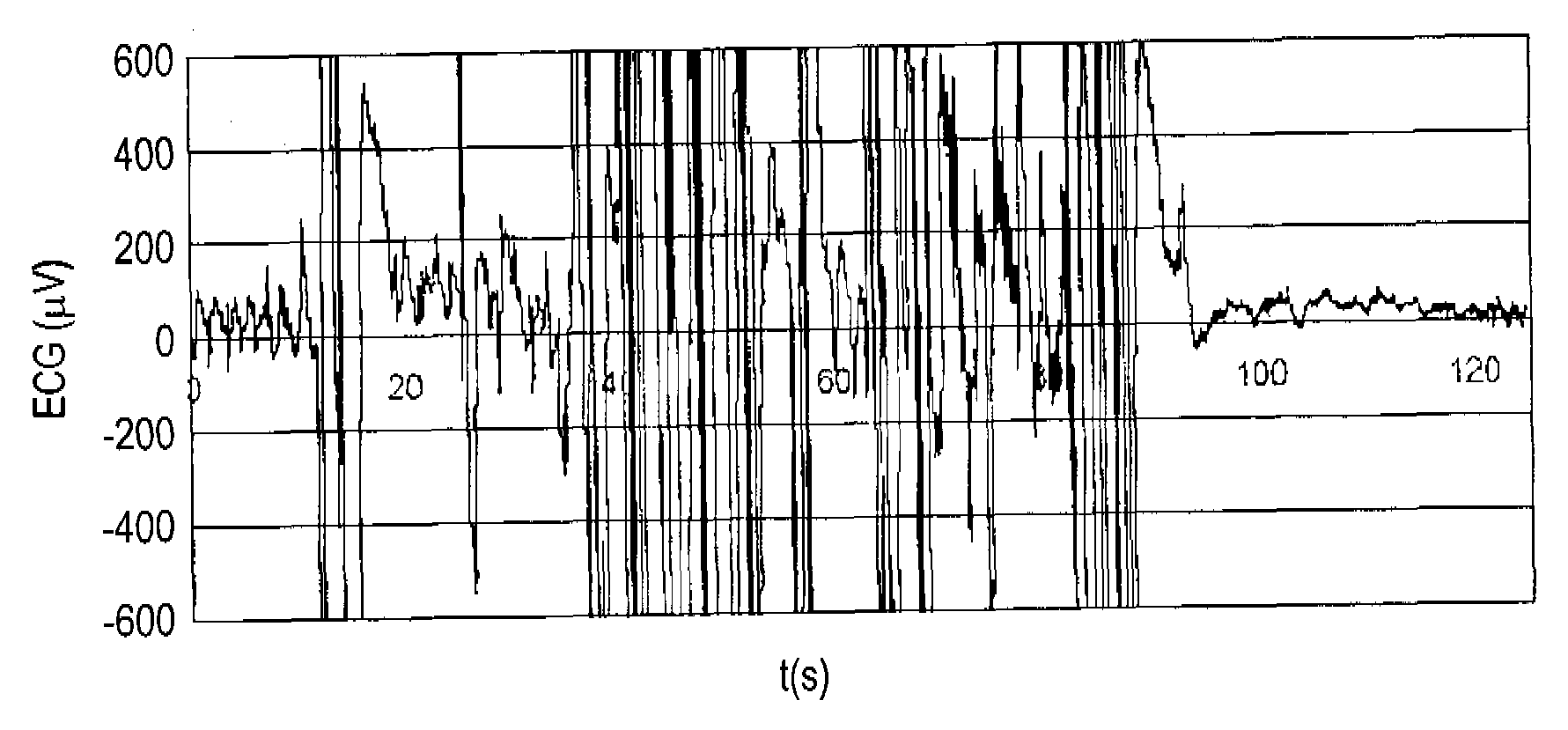Method for humanely stunning and slaughtering poultry using controlled low atmospheric pressure
a low atmospheric pressure and stunning technology, applied in the field of humanely stunning and slaughtering poultry, can solve the problems of reducing the value of meat obtained from poultry, electrocution, and increasing the suffering of birds, and achieve the effect of excellent meat quality
- Summary
- Abstract
- Description
- Claims
- Application Information
AI Technical Summary
Benefits of technology
Problems solved by technology
Method used
Image
Examples
example 1
[0056]In this example, the effect of subjecting chickens to varying pressure levels was determined. To begin, 48 commercial broilers at 63 days of age were divided into six groups. Birds from each group were individually subjected to pressure levels of either 70.9 kPa (8.9 inHg gauge), 60.8 kPa (11.89 inHg gauge), 50.7 kPa (14.89 inHg gauge), 40.5 kPa (17.92 inHg gauge), 30.4 kPa (20.91 inHg gauge), or 20.3 kPa (23.9 inHg gauge), using the decompression chamber described in the Test Methods section, over a lapse time of 37 seconds. Once the target pressure was obtained, the pressure was maintained for two minutes, and the occurrence of ataxia was observed. Ataxia was determined to have occurred if the birds suffered a loss of posture (LOP), resulting in the inability to maintain a standing position and no neck tension, at the tested pressure level.
[0057]For birds subjected to pressure levels of 70.9 kPa (8.9 inHg gauge), 60.8 kPa (11.89 inHg gauge), 50.7 kPa (14.89 inH...
example 2
Time to Loss of Posture
[0058]In this example, the time to loss of posture (LOP) for birds subjected to varying pressure levels was determined. 56 commercial broilers at 63 days of age were divided into seven groups, with 8 birds per group. Birds from each group were individually subjected to pressure levels ranging from 20.30 kPa (23.9 inHg gauge) to 35.52 kPa (19.37 inHg gauge) using the decompression chamber described in the Test Methods section, and a lapse time of 37 seconds. Once the test pressure was obtained, the pressure was maintained for 2 minutes, and the time it took for the birds to experience a loss of posture was determined. The results are given in Table 1 below.
[0059]
TABLE 1*Absolutepressure inTime tokPa (inHgTime to LOPDeathgauge)LOP (%)(seconds)Mortality (%)(seconds)20.30 (23.9) 10034.5 ± 0.7a100 79.1 ± 1.6d22.80 (23.16)10034.9 ± 1.0a100 85.5 ± 1.5d25.30 (22.42)10034.1 ± 1.3a100 83.4 ± 3.8d27.90 (21.29)10034.6 ± 1.6a100128.4 ± 8.3c30.40 (20.91)10038.1 ± 2.3ab62.51...
example 3
Humanity of Slaughter
[0068]In this example, the brain wave activity of birds slaughtered using low atmospheric pressure was observed.
[0069]To begin, electrodes were attached to the skin of 56 broilers so that a Type II electrocardiogram (ECG) based on Einthoven's triangle could be recorded. Additional electrodes were attached to skin overlying the skull at the base of the comb of the bird to record electrical activity of the brain as an electroencephalogram (EEG). The electrodes were connected to a telemeter which sent radio waves to a receiver that was hard wired to a PC-data acquisition system.
[0070]The birds were placed one at a time into the decompression chamber described in the Test Methods section, and the pressure was lowered to 21.4 kPa (23.57 inHg gauge) over a lapse time of 37 seconds. The low pressure was maintained for 50 seconds (hold time).
[0071]On average, a 90% reduction in EEG signal occurred within 32 seconds after beginning decompression and reaching a pressure o...
PUM
 Login to View More
Login to View More Abstract
Description
Claims
Application Information
 Login to View More
Login to View More - R&D
- Intellectual Property
- Life Sciences
- Materials
- Tech Scout
- Unparalleled Data Quality
- Higher Quality Content
- 60% Fewer Hallucinations
Browse by: Latest US Patents, China's latest patents, Technical Efficacy Thesaurus, Application Domain, Technology Topic, Popular Technical Reports.
© 2025 PatSnap. All rights reserved.Legal|Privacy policy|Modern Slavery Act Transparency Statement|Sitemap|About US| Contact US: help@patsnap.com


